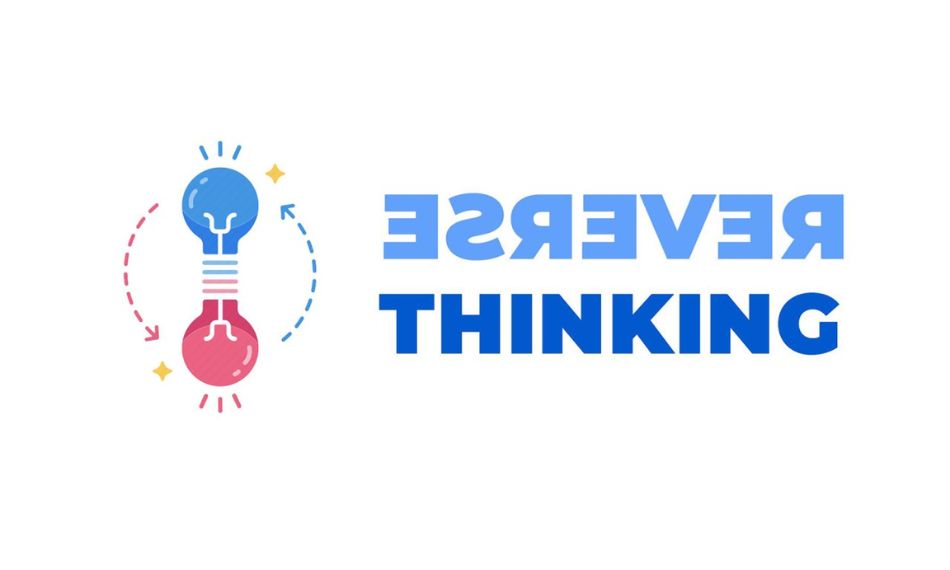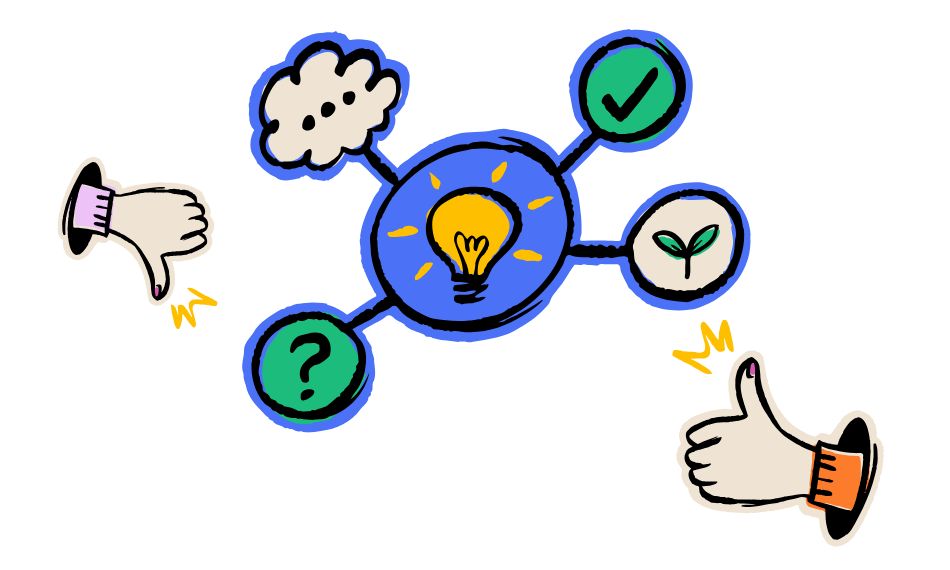What Is Reverse Thinking?

Reverse thinking is one of those writing tips that can instantly elevate your IELTS Task 2 response. It means flipping the usual perspective. In IELTS Writing Task 2, most candidates follow predictable patterns. Reverse thinking pushes you to argue the less obvious side of a topic. For instance, if most people support an idea, you explore why it might not work or be flawed. This not only grabs the examiner’s attention but also helps you present a mature, well-developed argument.
Why Reverse Thinking Works in IELTS Writing Task 2

A strong introduction grabs attention, but reverse thinking is what truly sets your essay apart. It shows independent thought and helps you avoid cliché ideas, making your argument feel sharper and more original.
Let’s look at an example of reverse thinking in action.
Question:
“Some people believe that unpaid community service should be a part of high school programs. Do you agree or disagree?”
Typical Answer (Agree):
Yes → encourages responsibility, benefits society, and builds teamwork among students.
Reverse Thinking Answer (Disagree):
No → reverse thinking suggests that mandatory community service might overburden students, especially those juggling part-time jobs or difficult family responsibilities. It could lead to burnout, decreased academic performance, and resentment toward volunteer work – defeating its original purpose.
This use of reverse thinking brings major advantages:
-
It shows independent thinking: You’re not just repeating what most candidates say – you’re analyzing beyond the obvious.
-
It offers a fresh perspective: The examiner has likely read hundreds of “agree” essays. A well-defended “disagree” argument is more likely to grab attention.
-
It allows you to showcase advanced reasoning and vocabulary: You’re able to handle complexity and craft nuanced ideas with clarity.
Reverse thinking is especially helpful in “Agree/Disagree,” “To what extent do you agree or disagree,” and “Discuss both views” questions. These formats give you the flexibility to challenge assumptions and stand out with originality.
See also: Grammars for IELTS Writing
How to Use Reverse Thinking in Your Essay in IELTS Writing Task 2

Reverse thinking is a powerful tool, but it needs the right structure to work. You can’t just take the opposite stance and call it a day – you have to back it up with persuading and logical reasoning.
Step 1: Identify the Common Response
Before you start writing, figure out what most candidates are likely to say. Recognizing the usual stance helps you explore the less common, often more thought-provoking angle.
Example: If the question asks whether children should learn to cook at school, many will support the idea. You might explore why it’s not essential – or even problematic – if done poorly.
Step 2: Flip the Perspective with Purpose
Don’t take the opposite view just for the sake of it. Choose the alternate position only when you can build a strong, logical argument. Consider practicality, social impact, or real-world cases to back up your points.
Good example: Mandatory cooking classes could waste valuable academic time or cause stress for students who dislike cooking.
Weak counter: “Cooking is pointless” – too extreme, lacks balance.
Step 3: Craft a Clear Thesis Statement
Your stance should be clear from the introduction. This sets the tone and shows the examiner you’re confident in your argument, even if it’s not the mainstream opinion.
Example: “While many emphasize job satisfaction, this essay argues that long-term security offers more sustainable benefits.”
Step 4: Build Solid Paragraphs with Evidence
Each body paragraph should focus on one reason supporting your argument. You can use examples, logic, and real-world situations to make your case convincing. The more grounded your ideas are, the more persuasive your essay will be.
Step 5: Acknowledge the Other Side
It’s essential that you can show that you’ve considered the popular opinion – even if you don’t agree with it. This makes your argument more balanced and mature.
Example: “While helping the community teaches valuable life skills, academic pressure and personal circumstances often make such programs impractical.”
Step 6: End with a Strong Conclusion
You should clearly reinforce your stance by restating your opinion in a confident and concise way. Then, summarize the key points you’ve discussed throughout the essay to show how they support your argument. Finally, make sure your conclusion matches the position stated in your introduction and reflects that you’ve fully developed your perspective on the topic.
Real Example: Reverse Thinking in Action

Let’s take a look at how reverse thinking works in a real IELTS Writing Task 2 prompt.
Prompt:
“Many believe that job satisfaction is more important than job security. Do you agree or disagree?”
Common Approach:
Most candidates will agree, focusing on passion, motivation, and happiness at work.
Alternative Approach:
To stand out, take the opposite view – and support it logically and persuasively.
Thesis statement:
“While job satisfaction is desirable, in today’s unpredictable economy, job security is far more valuable. It provides mental stability, enables long-term financial planning, and offers a clear career pathway.”
Body Paragraph 1:
Job security reduces stress, improves focus, and provides consistent income – key for those with families or debt.
“A major benefit of job security is its capacity to reduce psychological stress in the workplace. When employees are confident that their position is stable, they are less likely to be distracted by concerns about unemployment or financial instability. This sense of security allows them to concentrate more effectively on their responsibilities, resulting in improved productivity and job performance. In contrast, those in unstable roles may constantly fear being laid off, which can undermine both motivation and mental well-being.”
Body Paragraph 2:
Staying in one organization builds trust, expands skill sets, and increases chances for promotion.
“In addition, long-term employment provides a strong foundation for professional growth. Employees who remain with an organization over time typically have greater access to internal training programs and mentorship, which help them acquire advanced skills. This accumulated experience often leads to promotion opportunities and more secure positions within the company. As a result, job security not only provides stability in the short term but also contributes to sustainable career advancement in the long term.”
Balanced Rebuttal:
While personal fulfillment at work is important, it cannot outweigh the fundamental need for financial stability in most cases.
“It is undeniable that job satisfaction plays a key role in maintaining employee morale and motivation. A fulfilling job can increase enthusiasm and engagement in daily tasks. However, in the absence of financial stability, such satisfaction may lose its value. Without a consistent income, individuals may struggle to support themselves and their families, making it difficult to enjoy any job – regardless of how interesting or meaningful it may seem. Therefore, job security should be considered the more fundamental priority.”
When to Use Reverse Thinking (And When Not To)

Reverse thinking works best when the topic allows for strong arguments on both sides and when going against the common view adds depth, not confusion. But it’s not always the right move. Here’s how to know when to use it, and when to skip it.
When to use reverse thinking:
- The prompt invites opinion or debate.
If the question says “Do you agree or disagree?” or “Discuss both views,” it’s a good time to try reverse thinking because you’re free to argue either side—as long as you back it up. -
The popular opinion is too obvious.
If you know most students will agree with one side, taking the opposite view can help your essay stand out (in a good way) and show critical thinking. -
You can support the ‘unpopular’ opinion with logic and examples.
If you can build a clear, reasonable case for the opposite side, reverse thinking makes you look sharp and confident as a writer.
When not to use reverse thinking:
-
The topic is morally sensitive or universally accepted.
Arguing against education, safety, or basic human rights just to be different will weaken your essay and could make it sound offensive. -
You don’t fully understand the counter-view.
If you’re forcing yourself to disagree but don’t really believe or understand the side you chose, your ideas will likely be shallow or confusing. -
There’s not enough room to develop the argument well.
If the opposite side needs too much explanation or nuance for the limited time and space you have in Task 2, it might be safer to take the more straightforward route.
Final Thoughts
Reverse thinking in IELTS Writing Task 2 is a smart strategy that, when done right, can distinguish your essay from the masses. It shows originality, sharp reasoning, and the confidence to challenge common beliefs. Just remember: use it where it fits naturally, build your arguments clearly, and support your stance with logic and examples.
Check out IELTS Test Pro for easy-to-follow writing guides, sample answers, and smart strategies to boost your score.